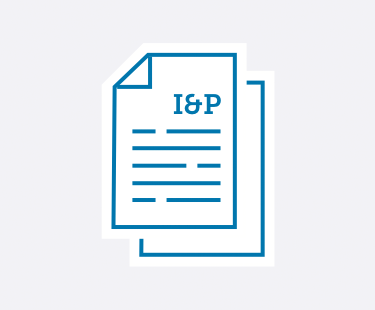

Learn practical strategies to handle emerging trends and leadership challenges in private schools.
No matter if you’re a School Head, Admission Director, Development Director, Board member, or any other private school administrator—Ideas & Perspectives®, ISM’s premier private school publication, has strategic solutions for the pervasive problems you face.
- Tuition not keeping pace with your expenses? In I&P, explore how to use strategic financial planning to create your budget and appropriately adjust your tuition.
- Enrollment dropping off? Discover how to implement the right admission and enrollment management strategies that engage your community—and fill your classrooms.
- Trouble retaining teachers? Learn how you can best support your teachers using ISM’s Comprehensive Faculty Development framework. Your faculty members will become more enthusiastic about their roles—which ultimately improves student outcomes.
- Fundraising campaigns not as successful as you’d hoped? Implement ISM’s practical advice and guidance to build a thriving annual fund, construct an effective capital campaign, and secure major donors—no matter your community size or location.
- Not sure how to provide professional development—for you and your staff? Learn ways to develop and fund a successful professional development strategy. You can improve teacher-centered satisfaction and growth, which in turn strengthens student-centered learning.
- Problematic schedule? You can master the challenges of scheduling with the help of ISM’s practical advice, based on our experience with hundreds of schools and our time-tested theories.
- And so much more.
I&P has shared targeted research, up-to-date insight, and sound theory with school leaders since 1975. More than 8,500 private school decision-makers find the answers to their schools’ administrative and governance matters in our advisory letter. We give you the strategic answers you need.
As an ISM Silver or Gold member, you not only receive issues online and in print 10 times a year, but you have access to 900+ articles in our web archive. Need help? It’s at your fingertips! Learn more and sign up for ISM's membership here.
Search
See the articles from our latest issue of Ideas & Perspectives.
Look Beyond Your Traditional Marketing Allies
Volume 37 No. 4 // March 22, 2012
As an Admission Director, you have developed an effective relationship with a variety of people and institutions that direct potential families to your school. Feeder schools, Admission Directors at noncompeting schools,1 day care centers, Chambers of Commerce and local service groups (e.g., the Rotary Club, Kiwanis, Lions Club), and churches and synagogues are among the sources of new families and students. You have invested time and effort in getting to know the directors of these institutions and educating them about your school’s unique programs and strengths. These marketing allies have become valuable in your school’s recruiting efforts.
1. Already a member? Click here to login.
2. Not a member? Click here to become a member.
3. Not sure? We'll help you figure it out.
Elements of a Sound Investment Policy
Volume 37 No. 3 // March 5, 2012
Responsible stewardship of your school’s investment funds resides in a clearly articulated and regularly monitored investment policy. This responsibility is the same whether you have a modest endowment or one that would rival that of a major college or university. The investment policy consists of two distinct aspects—an endowment policy and a treasury policy. The endowment policy concerns long-term investment strategies and policies. The treasury policy articulates the investment parameters for funds that you invest for only short periods of time to cover operating and capital needs. The short-term investment or treasury policy should focus on providing sufficient liquidity and safety for operating cash while maximizing yield.
1. Already a member? Click here to login.
2. Not a member? Click here to become a member.
3. Not sure? We'll help you figure it out.
The Fair Labor Standards Act: Getting Overtime Right
Volume 37 No. 3 // March 5, 2012
Scene: The Development Office secretary often works late setting up evening meetings or assisting at after-hours events. During a budget crunch, the School Head decides to put her “on salary” and stops paying overtime. When you receive a letter from the Department of Labor (DOL) a few weeks later, notifying you of an investigation into the school’s overtime pay practices, you wonder, “Could this be what triggered the investigation?”
1. Already a member? Click here to login.
2. Not a member? Click here to become a member.
3. Not sure? We'll help you figure it out.
When the Board President Is the Problem
Volume 37 No. 3 // March 5, 2012
The reasons a Board of Trustees proves ineffective are many and varied. But what if you, an “ordinary” Board member, assess the situation and conclude that the Board President is the source of the problem?
1. Already a member? Click here to login.
2. Not a member? Click here to become a member.
3. Not sure? We'll help you figure it out.
Aegis Academy Faculty Evaluation Sample
Volume 37 No. 2 // February 16, 2012
The following represents a sample evaluation—including commentary on each section and subsection—for a faculty member at our fictional K–12 coed day school, Aegis Academy.
1. Already a member? Click here to login.
2. Not a member? Click here to become a member.
3. Not sure? We'll help you figure it out.
A 21st Century Teacher Evaluation Model
Volume 37 No. 2 // February 16, 2012
As outlined in a recent issue of I&P, ISM recommends addressing your school’s employment-related interactions with faculty—hiring, evaluation, corrective action, etc.—as part of a Comprehensive Faculty Development approach. A portion of this system is the school’s Evaluation and Growth Cycle, which itself is comprised of several interrelated activities. This issue zeroes in on the evaluation process, offering a new teacher evaluation model for 21st Century Schools.
1. Already a member? Click here to login.
2. Not a member? Click here to become a member.
3. Not sure? We'll help you figure it out.
Comparing and Contrasting Evaluation Approaches
Volume 37 No. 2 // February 10, 2012
In this issue, ISM is recommending an enhanced approach to teacher evaluation that stands in marked contrast to traditional “clipboard observation” methods. The chart below illustrates the similarities and differences between the two approaches.
1. Already a member? Click here to login.
2. Not a member? Click here to become a member.
3. Not sure? We'll help you figure it out.
Developing Faculty Through Coaching and Mentoring
Volume 37 No. 1 // January 13, 2012
As a key element of Comprehensive Faculty Development, it is important for administrators to have an intentional process for evaluating, coaching, and mentoring faculty. By actively gaining a clear, firsthand view of each faculty member’s skills, characteristics, and performance through observation and engagement, you will be able to help them grow and develop in ways that will directly impact the school’s students. In this process, teachers are accountable for pursuing ongoing professional growth and renewal, and administrators are accountable for observing, coaching, evaluating, and guiding faculty members’ growth in substantive ways.
1. Already a member? Click here to login.
2. Not a member? Click here to become a member.
3. Not sure? We'll help you figure it out.
Systematically Attracting, Developing, Rewarding, and Retaining Faculty: A Mission-Based Model for 21st Century Schools
Volume 37 No. 1 // January 13, 2012
This article examines the need for 21st Century Schools to address and manage all of their employment needs—e.g., hiring, evaluation, corrective action—as part of an integrated approach. During the past 18 months, ISM has been engaged in an intensive study of the needs of the 21st Century School.1 With specific regard to faculty, we believe that to thrive, schools will need to: measure teacher effectiveness on an ongoing basis (such as through annual evaluations); establish annual career-long improvement plans that invest in each teacher’s strengths;2 and hold ineffective teachers accountable.3 These objectives are best achieved by taking an active, integrated approach for engaging, managing, and developing the school’s faculty. Our model, called Comprehensive Faculty Development, is a mission-based series of interrelated activities through which the Head and her deputies systematically work to attract, develop, evaluate, reward, and retain teachers who deliver the mission to students with excellence.4
1. Already a member? Click here to login.
2. Not a member? Click here to become a member.
3. Not sure? We'll help you figure it out.
The School Head-Business Manager Partnership
Volume 37 No. 1 // January 13, 2012
The Board of Trustees holds you, the School Head, ultimately accountable for the prudent fiscal management of the school. You, in turn, rely on your Business Manager to shoulder much of the responsibility for the school’s fiscal affairs, given your plethora of responsibilities. Having a strong, trusted partner in this area makes it possible for you to devote more of your time and attention to other areas of school operation. Even though the Board holds you accountable for the school’s overall fiscal management, the Business Manager is typically viewed by your Board as having special knowledge or expertise in this area. In addition, the Business Manager is the one member of your Management Team who is in frequent contact with the Treasurer and other members of your Board.
1. Already a member? Click here to login.
2. Not a member? Click here to become a member.
3. Not sure? We'll help you figure it out.


